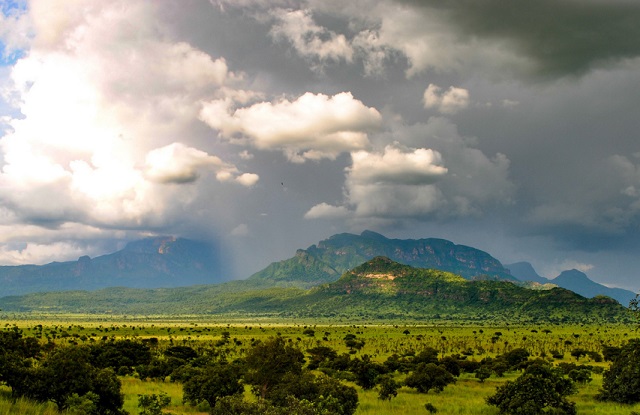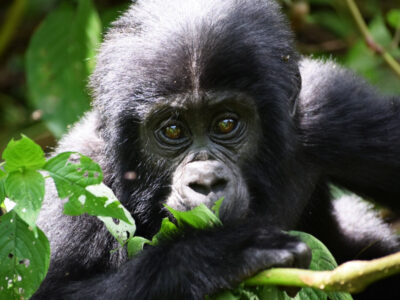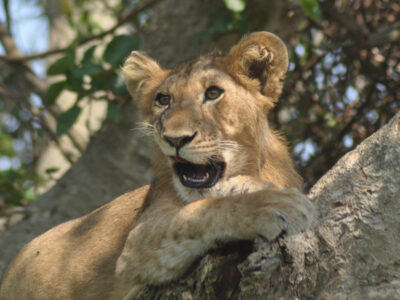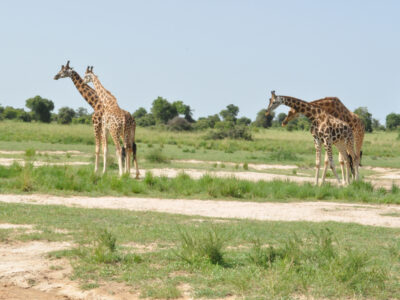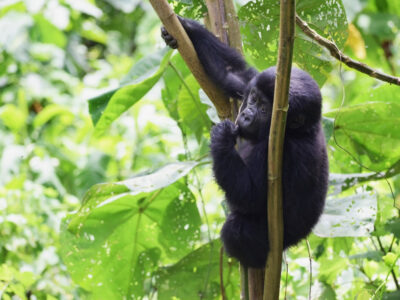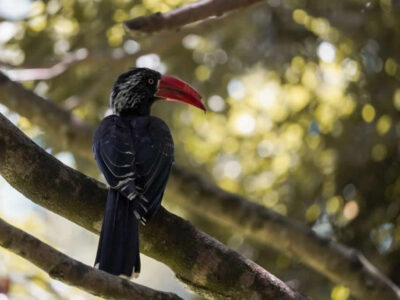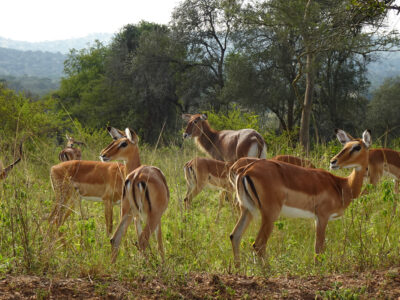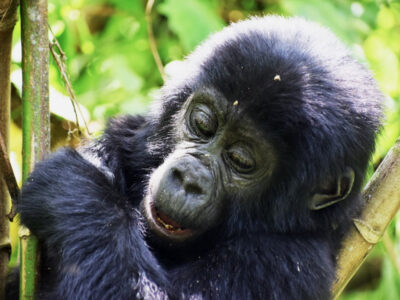UNLOCKING PIAN UPE WILDLIFE RESERVE.
Pian Upe Wildlife Reserve is the second largest protected game reserve area located in the northeastern region of Karamoja in Uganda. To revive and promote Pian Upe Game Reserve as one of East Africa’s premier game parks, the Uganda Wildlife Authority (UWA) and conservation non-profit, Space for Giants, have entered into a co-management partnership agreement.
On July 15, the new deal was signed in the eastern city of Soroti to unlock investments in their countries’ protected areas by seeing UWA retain the wildlife management forte while Space for Giants, a conservation agency that has over the last 20 years partnered with 10 African governments expected to raise the money needed to run the wildlife reserve on a day-to-day basis.
Some of the delegates that signed the agreement include UWA director of conservation and the Chief Administrative Officers that is John Makombo and Dr. Max Graham respectively. However, Dr Max Graham signed on behalf of the neighboring districts like Amudat, Bukedea, Bulambuli, Katakwi, Kumi, Kween, Nabilatuk, Nakapiripirit and Napak around the game reserve.
“We hope to get more benefits for the local communities which will strengthen our collaboration with partners to commit to conservation,” Makombo said the agreement is a major step in the sustainable conservation of the reserve.
Makombo added saying that if everyone plays their part, there will be visible benefits to the communities.
The Founder and CEO, Space for Giants Dr Max Graham noted that his organization collaborated with the government of Uganda in the area of conservation for the last seven years. During the agreement with UWA, the District Local Governments and the Pian Upe Community Wildlife Association, he expressed his confidence in the partnership.
The Ugandan Government sets in motion the process to fully restore Pian Upe as one of East Africa’s premiere Parks through this co-management partnership.
Graham said that the co-management agreement also enhances Pian Upe’s value for local communities and its economic contribution to the country by investing in Pian Upe’s exceptional natural habitat and the conservation of its biodiversity.
Although a figure of around US$ 8 million has been mentioned by senior government officials, It is not yet clear how much money is required to resuscitate Pian Upe. The non-profit is yet to work out a detailed budget of how much is needed to run the park however a source close to Space for Giants told The Independent.
The source added saying that Space for Giants has to work out what’s needed first, and then raise it.
The mobilized money will be used for securing the wildlife reserve, investing in community enterprises, scaling up law enforcement, fire management, conducting wildlife censuses and ultimately re-introducing key species.
Within six months, space for Giants will present a business plan to the initiative’s board setting out in details its approach and budget.
To secure the initial funding required to execute the project, selling carbon offsets under a carbon project that has already been launched and seeks is expected as well as seeking complementary philanthropic support for the project.
What are the benefits of this project?
- Under this pioneering new conservation investment agreement, communities from the neighboring nine districts in eastern Uganda and wildlife reserves will see significantly improved economic and ecological benefits.
- Jobs and business opportunities arising from the reserve’s rejuvenation are expected to go to over 150,000 locals’ first living around the pian upe game reserve.
About Pian Upe game reserve
Pian Upe Wildlife Reserve is the second largest protected area in Uganda from Murchison falls national park. The wildlife reserve is a protected area covering 2,043 sq km inhabiting 525 recorded bird species and 163 mammals including Uganda’s widest diversity of plains mammals, including the cheetah, the endangered African wild dog, a rare sub-species of roan antelope, and the Rothschild giraffes.
“Pian Upe’s lowland rangeland nature presents an opportunity for the visitors to see unique attractions.” The the Acting Commissioner in charge of wildlife conservation at the Ministry of Tourism, Wildlife and Antiquities George Owoyesigire told The Independent on July 29.
Since 1994, the game reserve is renowned for having one of the most charming expanses of distinct wildlands in the country dominated by plateaus carpeted by both green and golden intact wooded savannah plains surrounded by mountains.
What are the activities in pian upe?
Culture tour.
Pian Upe wildlife reserve is surrounded by the karamonj who are cattle keepers that move from one place to another searching for pastures. The karamonja live in mayatta houses that features bristle species, lemon grasses, and beard grasses, Its plains are dominated by thatching grass with sleeping plains that are decorated with red acacia, desert date, bush willows and shrubs. visitors will be excited of their culture wears that are beads shaped which they arefree to buyas they support their businessand the way of dancing
Game drive.
In addition to the above, the reserve is also a home of reptiles including venomous puff adders, savannah monitor lizards, common agama, chameleons, skinks and rock pythons however Crocodiles have also been sighted in River Girik which flows through the southern part of this park. During the game drive, different animals will be spotted like elephants, buffalos, lions , antelops and many more
Nature walks and hiking.
Pian upe is surrounded by local communities like karamonj and lies in the embrace of three mountains; Mt. Elgon to the south, Mt. Kadam to the northeast and Mt. Napak to the northwest something which guarantees an opportunity for mountain climbers and hikers. Visitors who are physically fit have a lot to explore while in pian upe game reserve. however walking foot to explore the local community of karamonj
Birding .
Pian Upe’s ecosystem is a best birding paradise for bird lovers. Game reserve attracts unique bird species which makes it an endeared birding hotspot on the Uganda Safari itinerary. Some of the birds to look out for include Ostriches (both wild and domesticated), Abyssinian ground hornbills, superb sterlings, Secretary birds; even the Shoebill can be sighted.
What are the challenges faced in pian upe?
Poaching.
Just like any other park or game reserve, pain upe face poaching since it inhabits various mammal species and bird species. However, local conservationists say Pian Upe’s biodiversity and role in the larger regional ecosystem have over the last few decades been threatened by poaching. For instance, thousands of elephants and rhinos used to roam the reserve but were lost to poaching thus the reserve has not been able to generate enough funding to effectively be managed. Poaching threats ecosystem resilience, biodiversity and local communities.
Human-wildlife conflict
Human- wildlife conflict is a common challenge that is faced in not only game reserves but also national parks. These conflicts are always between the local communities and their neighboring game reserve where the Uganda Wildlife Authority expands wildlife territories as they affect local people’s homes. However, these conflicts have been solved by dividing the 20% of the entry fee collected from the visitors touring the game reserve.
Problematic animals.
Local communities around the Pian Upe wildlife reserve always face problematic animals that escape from the national parks. These wildlife animals include lions, elephants, monkeys and many more which destroy the lives of the local community people, properties like crops and many more. Local community people end up killing them animals from the game reserve which affects UWA by reducing the number of animals in pian upe.
“The revival of the park will eventually benefit everyone.” Dr. Gladys Kalema-Zikusoka welcomed the new partnership between UWA and Space for Giants.
“The animals are quite shy compared to other national parks because they were poached a lot by the Karimojong. “This (timid animals) is not good for tourism,” Zikusoka said basing on his work done on a conservation work in this game reserve.
Zikusoka told The Independent that if resources are made available for UWA to carry out more patrols and stop poaching, the animals will get used to people and tourists will visit to see the animals.

